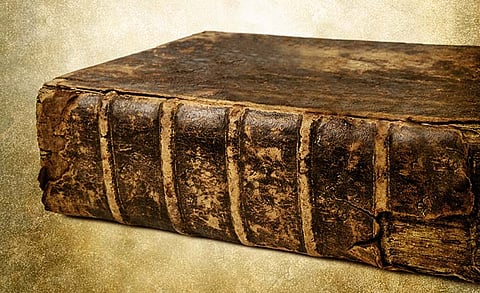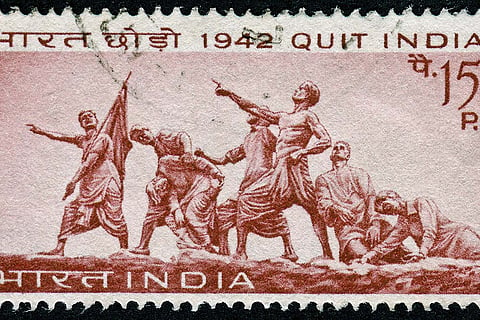Hum laayen hain toofan se kishti nikaal ke
Is desh to rakhna mere bachchon sambhaal ke
Republic Day Special | Opinion: Modi-Shah Duo Smartly Used Flexibility In Constitution's Design To Reduce J&K To A Union Territory
The Centre's power to be a dominant force had been inscribed in the Constitution amidst turbulent times in the aftermath of the Partition, writes author Gyanesh Kudaisya
—Kavi Pradeep
(Lines from a song from the 1954 Bollywood film Jagriti)
Paradoxes and ironies abound as the Republic celebrates the 70th anniversary of its Constitution. In earlier times, the Dalits turned the book into an icon, held tightly in Dr B.R. Ambedkar’s hand, as hundreds of his statue, cast in stone and metal, appeared in parks, streets and public places across India. Now, the Preamble, starting with those magical words, ‘We the People’, is being recited at protest marches and rallies by multitudes across the country’s length and breadth. In the words of historian Rohit De, the Constitution has become a flame, a blazing symbol of people’s hopes. It has also become a protective armour for citizens fearful of being divested of their rights. Perhaps, never in human history has a constitution evoked such popular sentiments, becoming a focal point for mobilising millions, giving them a rallying cry!
Seventy years ago, when the Constitution came into effect, the mood was of unbounded optimism. Impressive ceremonies and festivities heralded the birth of the Republic. These included a 31-gun salute to the President, Rajendra Prasad, who took the oath of office in Rashtrapati Bhavan’s Durbar Hall. Later in the day, he took part in a ceremonial parade seated in an open horse-drawn coach, which proceeded along Delhi’s Kingsway and Connaught Place, with over 3,000 military personnel in procession and a column of IAF aircraft performing a flypast overhead. New Delhi wore a festive look, its streets and buildings decorated with buntings, flowers and flags.
It remains a remarkable achievement that the Constitution was adopted after 894 days of Independence. It immediately conferred rights relating to citizenship and transformed the Constituent Assembly into India’s provisional parliament. This moment of glory had come after months of dedicated hard work by the 308-member assembly which met for the first time on December 9, 1946. It took two years, 11 months and 18 days to accomplish the task of drafting the Constitution over 165 days. The intense debates drew widespread public attention and the visitors’ galleries, located 30 feet above the floor of the assembly chamber, were always packed and attracted as many as 55,000-odd visitors. The outcome of the assembly’s exertions was the world’s longest written Constitution. The cost of the exercise came to Rs 63.96 lakh that, in per capita terms then, came to the grand figure of Rs 5.25 per citizen! In the words of Rajendra Prasad, the making of the Constitution was “a task of tremendous magnitude”.
Between December 9, 1947 and November 26, 1949, the period during which the Constituent Assembly functioned, its members had to live through extraordinarily turbulent times, both domestically and internationally. To start with was the persistent, intractable deadlock between the Indian National Congress and the Muslim League over the Constituent Assembly’s very objective: was it to frame the Constitution for a united India, or for two separate dominions, India and Pakistan? Further, the experience of the interim government, formed on September 4, 1946, with Jawaharlal Nehru as Prime Minister and Archibald Wavell as Viceroy, confirmed once again that Congress and League politicians could not work together, even when saddled with ministerial responsibility. This further acerbated the political schism. That two substantial regional societies, Punjab and Bengal, could secede deeply imprinted the thinking of the Constitution makers. Further, this secession took the bizarre form of a territorial truncation, imposed hastily in the form of the Radcliffe Boundary Award, with its tragic and all-too-well-known consequences.

Within weeks of Independence/Partition, the start of armed conflict in Kashmir, its persistence till the end of 1949 and the fear of its escalation in unpredictable ways, enhanced the sense of insecurity. The tragic assassination of Gandhi by a Hindu in January 1948 shook the political leaders and masses alike, emotionally and psychologically. The huge influx of refugees and the urgent need for their rehabilitation made the State look inefficient, incapable and even helpless. Internationally, the assassination of General Aung San, the premier of Burma, and the untimely death of Mohammad Ali Jinnah in September 1948 signaled uncertain political conditions in the neighbourhood. All these circumstances left a deep imprint on the Constitution-makers’ mindset.
As did the geo-political legacy of the British Raj which they inherited. The variety and complexity of geo-political arrangements which existed in 1947 made the task of the founders of the Constitution a formidable one. Yet, the founders did not let the challenges distort their perspective or blur their vision. For them, the paramount challenge was to fabricate national unity with a strong Centre. Yet, such a strong Centre had to be aligned with popular aspirations for a nascent democracy and a diverse polity made of regions with their own patterns of cultural and regional specificity.
How did the founders of the Republic go about ensuring all this? Not without a great deal of debate and contestation. Intense debates and arguments took place over a number of issues: the name, India versus Bharat; whether the Constitution should be unitary or federal; the key provisions and powers necessary for instituting a strong Centre; the jurisdictional division between the Centre and the states demarcated through the Union, states and concurrent lists; the financial and emergency powers; and finally, the degree of flexibility to be built into the constitutional design.

Unsurprisingly, the Partition cast its long shadow over the deliberations of the Constituent Assembly. Its members increasingly favoured, notwithstanding many dissident voices amongst them, a centralised structure of government and believed that a strong Centre was essential to maintain the territorial integrity of India. Central jurisdiction came to be extended over as many as 97 subjects placed under the Union list, including critical areas such as defence, foreign affairs, currency, railways and communications. All residuary powers came to be vested in the Centre and, in case of any conflict, it was agreed that laws enacted by the Centre would prevail over any state law. In addition, Article 3 of the Constitution gave the Centre the power to create new states, alter existing boundaries and even abolish an existing state through ordinary legislation, without having to show two-thirds majority in Parliament or to amend the Constitution. Further, the Centre was granted emergency powers under Articles 352, 356 and 360. Under Article 356, for instance, an elected state government could be dismissed by the Centre and the state governor, an appointee of the Centre, could take charge. The civil services structure, the ‘Steel Frame’ inherited from the Raj, was continued and key services such as the IAS and the IPS were placed directly under the Centre. Further, the Constitution boosted the Centre’s financial resources by giving it the right to collect income tax and customs duties. Such provisions made the states dependent on the Centre for the bulk of their income which came through resource transfers and allocations. These vast powers were purposely vested in the Centre to ensure the unity and survival of India.
Granville Austin, the pioneering historian of the Constitution, notes that “creating a united India to pursue national development was the government and the framers’ highest priority”. Significantly, the word ‘Federation’ was not used in the draft of the Constitution because many people associated the term with fragmentation when the need was to consolidate and strengthen India. Thus ‘Union’ came to be the preferred term. Balveer Arora, a political scientist, has noted that it was Ambedkar’s genius that he was able to ‘package’ the proposals before the Constituent Assembly by arguing that, in times of difficulty, India would function as a unitary state but in ‘normal’ times it would function as a federal state. On November 4, 1948 Ambedkar, moving the draft Constitution, said in the assembly: “The federation is a Union because it is indestructible though the country and the people may be divided into different states for convenience of administration, the country is one integral whole, its people a single people living under a single imperium derived from a single source.”
In the 1950s, Nehru used diverse means to vigorously affirm the primacy of the Centre. Centralised development planning, for example, strengthened the role of the Centre. It was in that period that key elements of fiscal federalism evolved, together with their new instrumentalities and agencies. In 1951, a Finance Commission was set up to define financial relations and tasked with equitably distributing resources arising from taxes collected by the Centre, determining factors governing grants-in-aid and making recommendations on measures needed to augment the consolidated funds of each state. Similarly, the Planning Commission began to play an active role in drawing up development plans which affected the states.
The August 5, 2019, presidential order relating to Jammu and Kashmir revealed, in stark terms, the primacy of the Centre over the territory, divesting the state of its autonomy enshrined in Article 370, downsizing its status to a Union territory ruled directly by Delhi and even altering its geography. Ironically, the Narendra Modi-Amit Shah duumvirate could pull off this midnight political coup only because of the flexibility which the Constitution’s founders had built into its design. The Centre’s primacy and the contingent, the handy manner in which its dominance could be exercised had been inscribed, amidst turbulent times in the aftermath of Partition, in the Constitution.
ALSO READ
(Gyanesh Kudaisya teaches at the National University of Singapore and is the author of A Republic in the Making, India in the 1950s. Views expressed are personal.)